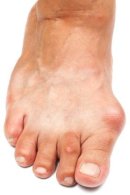 Bunions are often thought to be caused by wearing shoes that don’t fit, although that is partly true. High-heeled shoes can be on such cause of bunions, with the other predominant cause being that you inherit bunions as a dominant trait from your parents. According to Jean Brown Research, a research organization in Utah, “women are 10 times more likely to get bunions than men.” The speculated reason for this is because women are more likely to wear ill-fitting and higher-heeled shoes.
Bunions are often thought to be caused by wearing shoes that don’t fit, although that is partly true. High-heeled shoes can be on such cause of bunions, with the other predominant cause being that you inherit bunions as a dominant trait from your parents. According to Jean Brown Research, a research organization in Utah, “women are 10 times more likely to get bunions than men.” The speculated reason for this is because women are more likely to wear ill-fitting and higher-heeled shoes.
Bunion surgery usually occurs after non-surgical methods have proved to be ineffective. If you are having discomfort in your feet, contact Dr. Sharon Pletcher of Pennsylvania. Our doctor will treat your foot and ankle needs.
What is a Bunion?
A bunion is formed of swollen tissue or an enlargement of boney growth, usually located at the base joint of the toe that connects to the foot. The swelling occurs by the bones in the big toe shifting inward, which impacts the other toes of the foot. This causes the area around the base of the big toe to become inflamed and painful.
Why do Bunions Form?
- Genetics – susceptibility to bunions are often hereditary
- Stress on the feet – poorly fitted and uncomfortable footwear that places stress on feet, such as heels, can cause bunions to form
How are Bunions Diagnosed?
Doctors often perform two tests – blood tests and x-rays – when trying to diagnose bunions, especially in the early stages of development. Blood tests help determine if the foot pain is being caused by something else, such as arthritis, while x-rays provide a clear picture of your bone structure to your doctor.
How are Bunions Treated?
- Refrain from wearing heels or similar shoes that cause discomfort
- Select wider shoes that can provide more comfort and reduce pain
- Anti-inflammatory and pain management drugs
- Orthotics or foot inserts
- Surgery
If you have any questions please feel free to contact our office located in State College, PA. We offer the newest diagnostic tools and technologies to treat your foot and ankle needs.




